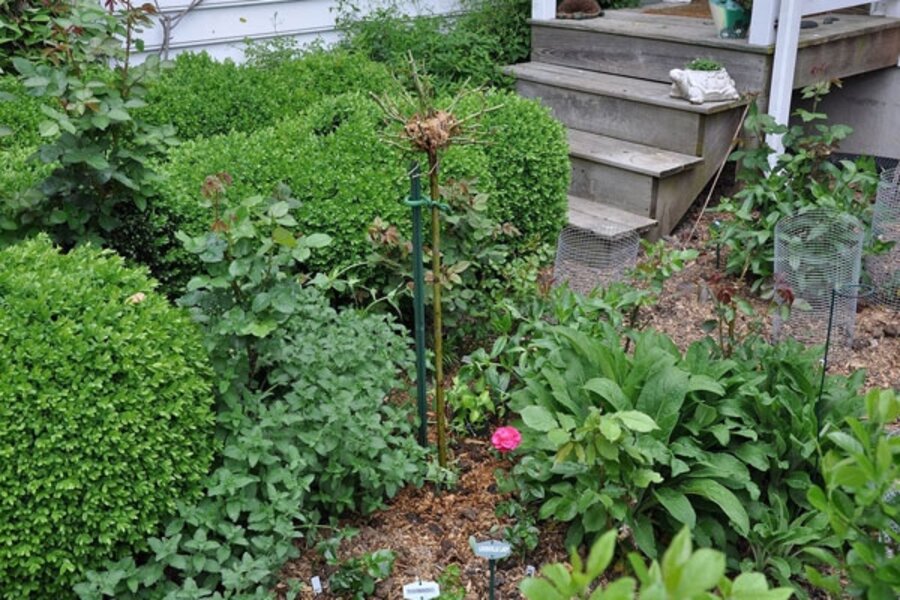The Rose Whisperer: Getting off the ground
Loading...
Beginning today, seven different bloggers – specializing in roses, herbs, greenhouse growing, garden-related travel, and general gardening – will be writing garden posts at Diggin' It. Usually, several different bloggers will be posting each day. So do return often to learn and be entertained. (You may want to bookmark us. The URL is http://features.csmonitor.com/gardening/blog-entry.)
First up is Lynn Hunt, an accredited horticultural judge and a Consulting Rosarian Emeritus for the American Rose Society. She has won dozens of awards for her writing in newspapers, magazines, and television. She grows roses and other plants in her garden on the Eastern Shore of Maryland:
Over the years I've come to realize that writing and gardening have a great deal in common. Both are solitary pursuits. Both can be extremely rewarding and incredibly frustrating. Both can foster tremendous success and smashing failure – sometimes within the same day.
There is a unique anticipation that accompanies the start of each new project, a blend of excitement and dread that comes from not knowing exactly how things will turn out. There is the endless task of editing, whether it is trimming a paragraph or shovel-pruning a disappointing rose. There are the hours of painstaking, meticulous work that others never witness.
Mostly, writers and gardeners share the challenge of starting with nothing, a blank page or a bare patch of earth, with the expectation that a mixture of creativity and elbow grease will result in something special.
Here’s hoping that The Rose Whisperer will be just such an endeavor – a combination of tales from the garden, growing tips, news from the rose world, and humor that will grow on readers.
So now that we are just getting off the ground, I decided to start my posts with the most basic of basics: the planting hole.
You see, it has been my experience that more thought is given to the rose purchase than to where the plant will eventually live. My cry of “don’t put a $20 (or maybe $30 these days) rose in a $2 hole” routinely falls on deaf ears. The result is unsatisfactory for the rose as well as the pocketbook. A properly prepared hole at least gives the plant a chance for success.
I revisited my own planting techniques recently when I said farewell to a longstanding tree rose budded with the shrub rose Sea Foam. Oh, she was a sight in her day with cascading branches covered with white blooms tinged with shell-pink. But just like those poinsettias that look jaunty and vibrant early on and then fade like an old watercolor painting, the bloom was off the rose. I had to face the fact that Sea Foam was washed up.
Before adding a replacement, I dug a hole three feet wide and 18 inches deep. Then I worked in a rose recipe my bushes appear to like:
5 shovels peat moss
4 shovels dehydrated cow manure
1 cup dolomite lime
2 cups alfalfa pellets
2 cups cottonseed meal
1/2 cup Osmocote (time-release fertilizer)
Generally, this concoction would be good for five to eight roses, but I used about half the mix to replenish the soil where the old tree rose had grown for more than a decade. Then for the piece de resistance, I threw two banana peels in the bottom of the hole. This practice goes back to the 18th century, even though rose fanciers then didn’t understand that peels would add helpful nutrients, including calcium and magnesium, to the soil.
My new rose would soon be in for a feast.
The Baby Blanket tree rose arrived and has been tucked into its new home. I placed damp moss around the bud union to keep it from getting scalded by the sun before the bush fully leafs out.
As soon as the first buds bloom, I’ll post the pictures here. And you’ll see why success with roses starts from the ground up.
Psssst: The Whisperer also recommends putting sweepings from your haircuts in the planting hole, or sprinkling them around your rose bushes. Old-timers say the nitrogen content of human hair contributes to more vivid colors and may also deter four-legged pests.





